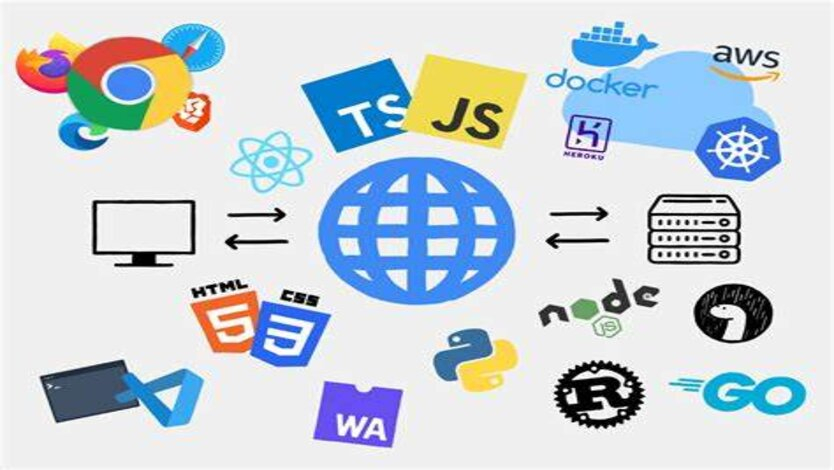Mastering the Art of Full-Stack Web Development: A Comprehensive Guide
Introduction
In the fast-paced digital era, web development has evolved from a simple static webpage creation to a complex process involving both frontend and backend development. Full-stack web development has emerged as a sought-after skillset, enabling developers to build dynamic, interactive, and feature-rich web applications from scratch. In this comprehensive guide, we'll delve into the world of full-stack web development, exploring its components, technologies, and the skills needed to become a proficient full-stack developer.
For Free Demo classes Click Here!
Understanding Full-Stack Web Development
Full-stack web development refers to the practice of designing, building, and maintaining both the frontend (user interface) and backend (server-side logic) of a web application. A full-stack developer possesses the skills required to handle all layers of a web application, ensuring seamless integration between the user-facing interface and the server-side functionality. This holistic approach enables developers to create end-to-end solutions that cater to both user experience and data management.
Components of Full-Stack Web Development
For Free Demo classes Click Here!
-
Frontend Development: This involves creating the user interface of a web application that users interact with directly. It encompasses HTML, CSS, and JavaScript, along with frameworks and libraries like React, Angular, or Vue.js, which simplify the process of building dynamic and responsive user interfaces.
-
Backend Development: Backend development involves building the server-side components that manage data, process requests, and perform various operations. It includes programming languages such as Python, Ruby, Java, and frameworks like Node.js, Django, Flask, and Ruby on Rails.
-
Database Management: Databases are essential for storing and retrieving data. Full-stack developers need to be familiar with various types of databases, including relational databases like MySQL and PostgreSQL, as well as NoSQL databases like MongoDB.
-
Server Management: Managing servers and deploying applications is a crucial aspect of full-stack development. Developers must understand server configuration, hosting, and deployment processes using tools like Docker, Kubernetes, and cloud platforms like AWS, Azure, or Google Cloud.
-
API Development: APIs (Application Programming Interfaces) enable communication between different software components. Full-stack developers often create APIs to enable data exchange between the frontend and backend of an application.
-
Version Control: Collaboration is essential in modern web development. Version control systems like Git enable developers to work together efficiently by tracking changes, resolving conflicts, and maintaining a history of code revisions.
-
DevOps: DevOps practices involve integrating development and operations to automate deployment pipelines, ensuring a smooth and continuous delivery process. Knowledge of DevOps tools and practices is becoming increasingly important for full-stack developers.
For Free Demo classes Click Here!
Skills Required for Full-Stack Web Development
-
Programming Languages: A solid grasp of programming languages like HTML, CSS, JavaScript, and backend languages (Python, Ruby, Java, etc.) is fundamental.
-
Frontend Frameworks: Proficiency in frontend frameworks like React, Angular, or Vue.js is crucial for creating dynamic and interactive user interfaces.
-
Backend Frameworks: Knowledge of backend frameworks such as Node.js, Django, Flask, or Ruby on Rails is essential for building server-side logic.
-
Database Management: Understanding how to design, query, and manage databases is critical for data-driven applications.
-
Version Control: Familiarity with Git and version control workflows is necessary for collaboration and code management.
-
UI/UX Design: Basic UI/UX design skills can enhance the user experience of the applications you build.
-
Problem-Solving: Full-stack developers need strong problem-solving skills to tackle challenges in both frontend and backend development.
-
Communication and Collaboration: Effective communication and collaboration skills are vital when working in a team, especially on larger projects.
For Free Demo classes Click Here!
Challenges and Opportunities
While full-stack development offers immense opportunities for creating versatile and comprehensive web applications, it also presents challenges due to its broad scope. Staying updated with the rapidly evolving technologies and balancing both frontend and backend responsibilities can be demanding. However, mastering full-stack development can lead to greater job prospects, the ability to work on diverse projects, and a deeper understanding of the web development process as a whole.
Conclusion
Full-stack web development is a multifaceted skill that empowers developers to create complete web applications from start to finish. By encompassing both frontend and backend development, full-stack developers play a crucial role in delivering seamless and robust digital experiences. As the digital landscape continues to evolve, mastering the art of full-stack web development opens doors to endless possibilities in the realm of technology. So, if you're eager to build the next generation of web applications, diving into the world of full-stack development could be your path to success.
For Free Demo classes Click Here!
Mentor - Rajesh Chaudhary
Intormation and research are sources from internet.
Tags: #Web#Development #Aap Development #SoftwareDevelopment #nitsglobal #website #blog

